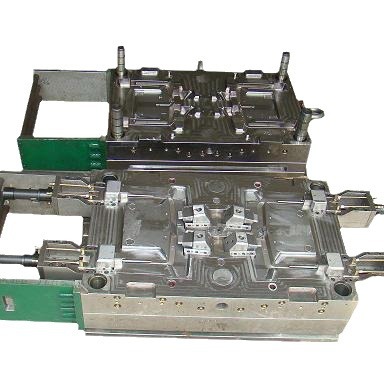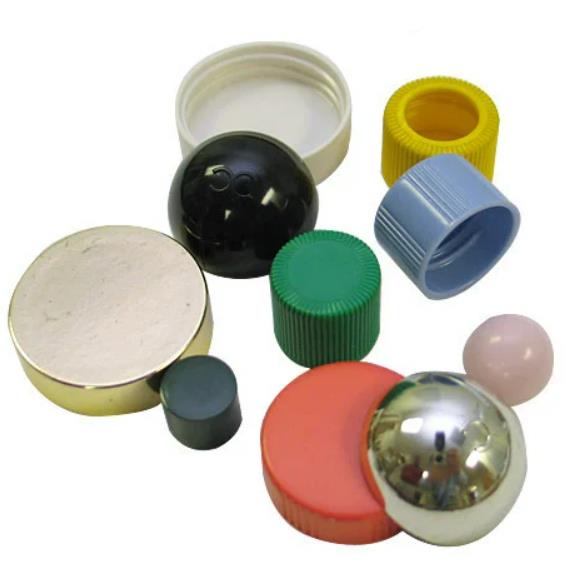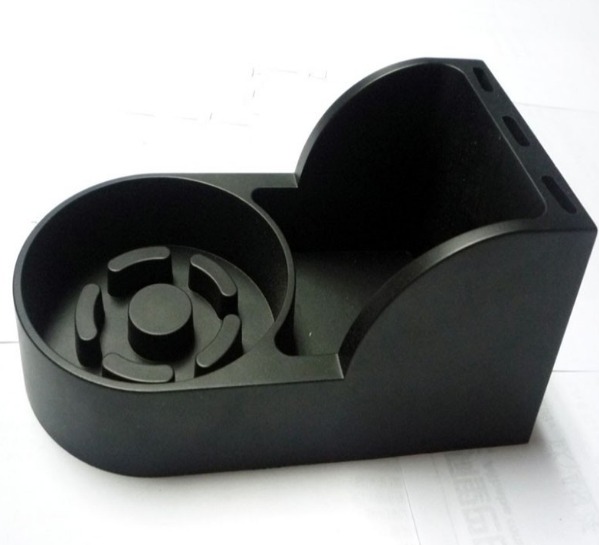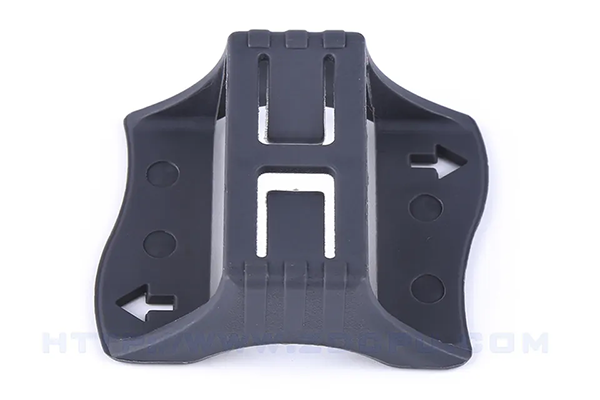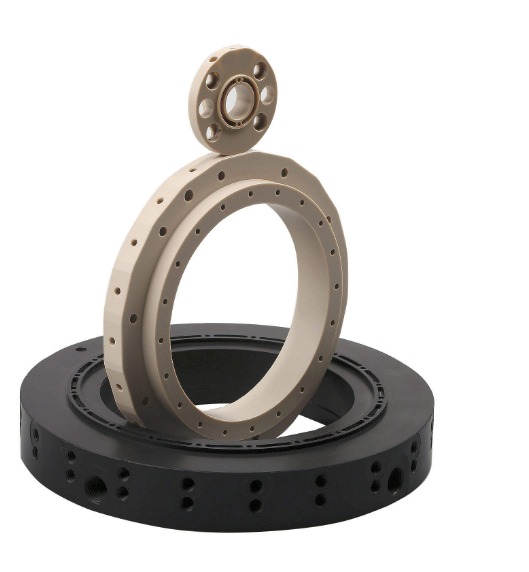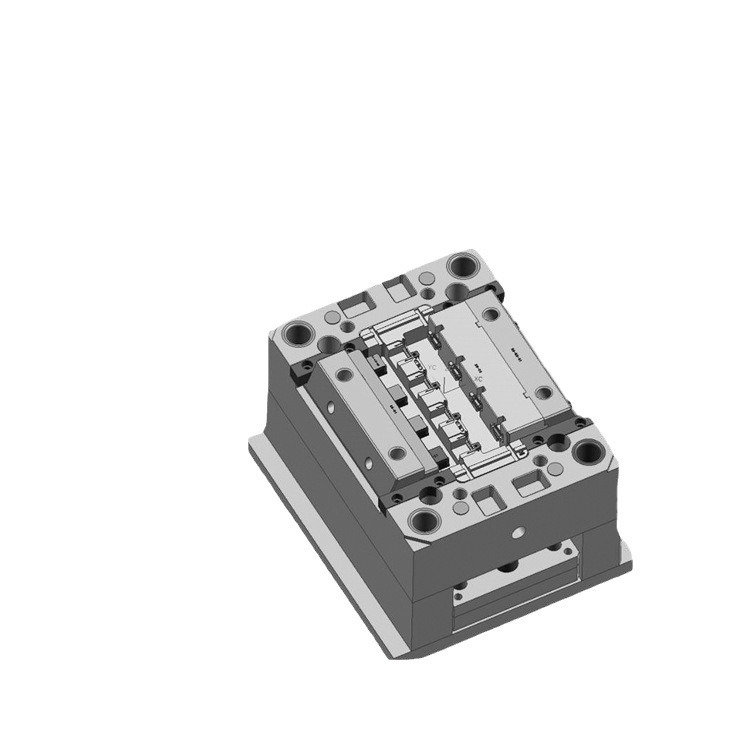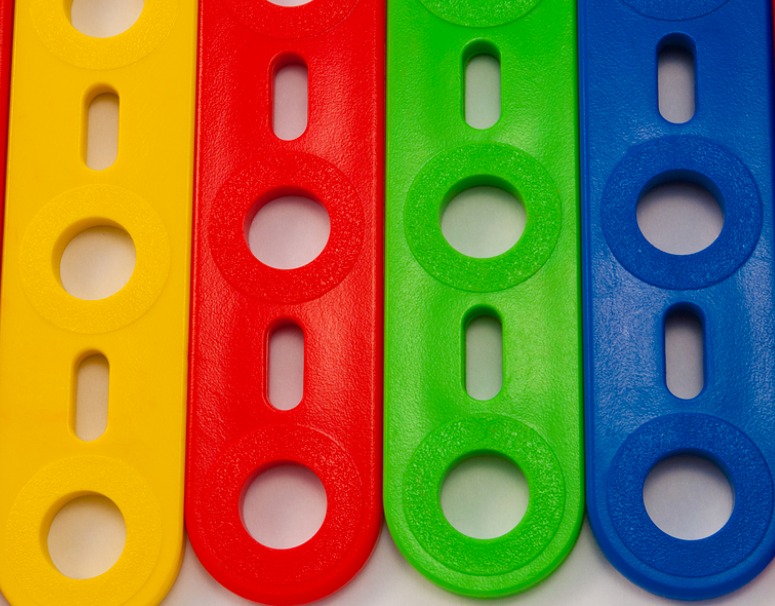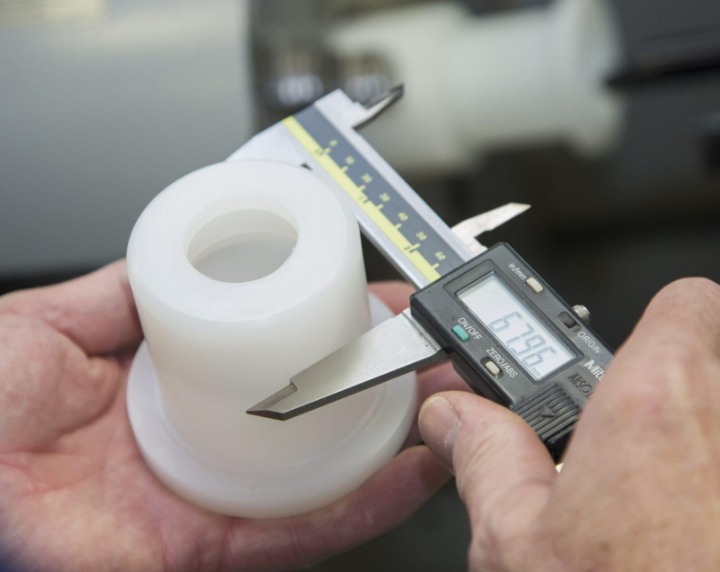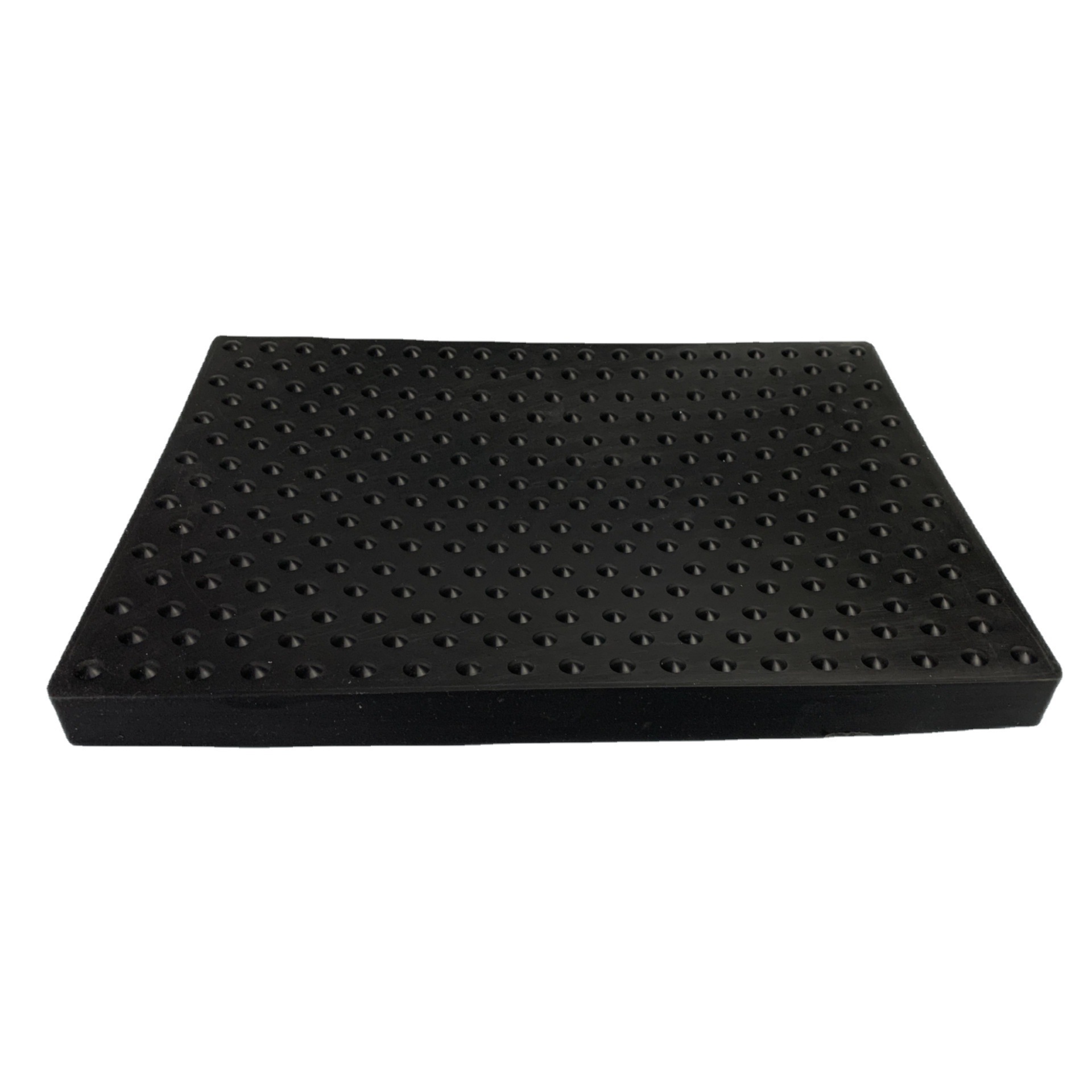Introduction
Understanding Plastic Injection Molding
Plastic injection molding is a widely - used manufacturing process in the plastic industry. It involves injecting molten plastic material into a mold cavity, where it cools and solidifies to take the shape of the mold. This process is highly efficient and can produce a large number of plastic parts with high precision.
The basic process of plastic injection molding is as follows: First, plastic pellets are fed into a heated barrel. The barrel rotates, melting the plastic pellets through heat and shear force. Then, the molten plastic is injected into a closed mold cavity under high pressure. After a certain period of cooling and solidification, the mold opens, and the finished plastic part is ejected.
This process is used in a vast range of industries. In the automotive industry, it is used to produce interior components like dashboards, door panels, and various engine parts. For example, a typical car contains hundreds of plastic injection - molded parts, which not only reduce the vehicle's weight but also improve fuel efficiency. In the electronics industry, plastic injection molding is used to make casings for smartphones, laptops, and other electronic devices. It allows for the production of complex and lightweight designs that meet the aesthetic and functional requirements of modern electronics. Additionally, in the medical field, it is used to manufacture disposable syringes, medical containers, and prosthetics, where high - precision and hygienic standards are crucial.
The Emergence of Plastic Mold Press
As the demand for plastic products grew and the requirements for product quality, production efficiency, and cost - effectiveness became more stringent, the plastic mold press emerged. The traditional plastic injection molding process faced challenges such as long production cycles, high energy consumption, and limitations in producing complex - shaped parts. The plastic mold press was developed to address these issues, aiming to revolutionize the plastic injection molding process. It introduced new technologies and design concepts, enabling more efficient material utilization, faster production speeds, and better control over the molding process. This article will explore in detail how the plastic mold press is bringing about these revolutionary changes in plastic injection molding.
How Plastic Mold Press Revolutionizes Plastic Injection Molding
Enhanced Precision and Accuracy
One of the most significant ways the plastic mold press revolutionizes plastic injection molding is through enhanced precision and accuracy. Traditional plastic injection molding processes often faced challenges in achieving high - precision parts. For example, the tolerance levels in traditional injection molding might be around ±0.2 - ±0.5 mm for complex parts. However, with the advanced control systems in plastic mold presses, the tolerance can be reduced to as low as ±0.05 - ±0.1 mm.
Modern plastic mold presses are equipped with state - of - the - art servo - hydraulic or fully electric control systems. These systems can precisely control the injection pressure, speed, and temperature. For instance, the injection pressure can be adjusted in real - time with an accuracy of ±0.5 MPa. This level of control ensures that the molten plastic is injected into the mold cavity with utmost precision, resulting in parts with consistent dimensions.
Moreover, the precision of the mold itself plays a crucial role. Plastic mold presses utilize high - precision machining techniques for mold manufacturing. Computer - numerical - control (CNC) machines are used to mill and engrave the mold with extremely tight tolerances. This means that the mold cavities can be created with a surface roughness of less than 0.1 μm, ensuring that the plastic parts produced have a smooth and accurate surface finish.
Higher Production Efficiency
Plastic mold presses have significantly improved the production efficiency of plastic injection molding. In traditional injection molding machines, the Mold closing speed might be relatively slow, taking around 3 - 5 seconds to fully close the mold. In contrast, modern plastic mold presses can achieve Mold closing speed as fast as 1 - 2 seconds. This reduction in Mold closing time shortens the overall cycle time of the injection molding process.
The Forming cycle,which includes the time for injection, cooling, and ejection, is also substantially reduced. For a small - to - medium - sized plastic part, the Forming cycle in a traditional injection molding machine could be 20 - 30 seconds. With a plastic mold press, the 成型周期 can be cut down to 10 - 15 seconds. This increase in production speed allows manufacturers to produce more parts in less time. The following table shows a comparison of production efficiency between traditional injection molding and plastic mold press:
| Aspect | Traditional Injection Molding | Plastic Mold Press |
| Mold closing speed | 3 - 5 s | 1 - 2 s |
| Forming cycle for small - medium parts | 20 - 30 s | 10 - 15 s |
| Production output per hour (for the same part) | 120 - 180 parts | 240 - 360 parts |
The faster production speed not only increases the output but also reduces the labor cost per part, making the manufacturing process more cost - effective in high - volume production scenarios.
Greater Material Compatibility
Plastic mold presses offer greater material compatibility compared to traditional injection molding setups. They can handle a wide range of plastic materials, from common thermoplastics like polyethylene (PE), polypropylene (PP), and polystyrene (PS) to high - performance engineering plastics such as polycarbonate (PC), acrylonitrile butadiene styrene (ABS), and polyamide (PA, also known as nylon).
For example, when processing polycarbonate, a plastic mold press can ensure that the material is evenly melted and injected into the mold cavity without issues such as thermal degradation. Polycarbonate has high heat resistance and strength, and the precise temperature and pressure control of the plastic mold press enable it to be molded into complex shapes with high precision.
Another example is the use of biodegradable plastics like polylactic acid (PLA). As the demand for environmentally friendly products grows, plastic mold presses can efficiently process PLA, which is more sensitive to processing conditions compared to traditional plastics. The ability to handle different materials expands the application scope of plastic injection molding, allowing manufacturers to produce products for various industries, from consumer goods to automotive and aerospace.
Cost - effectiveness
In the short - term, the initial investment in a plastic mold press might seem higher than that of a traditional injection molding machine. However, when considering the long - term costs, plastic mold presses are highly cost - effective.
Firstly, plastic mold presses reduce the amount of Waste material generated. In traditional injection molding, due to less precise control, the scrap rate can be around 5 - 10%. With a plastic mold press, the scrap rate can be reduced to 1 - 3%. For a production run of 10,000 parts, this means that with traditional molding, 500 - 1000 parts might be scrapped, while with a plastic mold press, only 100 - 300 parts are scrapped. Considering the cost of raw materials, this can result in significant savings.
Secondly, plastic mold presses are more energy - efficient. They consume less energy during the injection, heating, and cooling processes. On average, a plastic mold press can reduce energy consumption by 20 - 30% compared to traditional injection molding machines. This not only lowers the operational cost but also contributes to environmental sustainability.
Finally, the longer lifespan of molds used in plastic mold presses also adds to the cost - effectiveness. The precise control of the press reduces wear and tear on the molds. While traditional injection molding molds might need to be replaced after 50,000 - 100,000 production cycles, molds in plastic mold presses can last for 150,000 - 200,000 production cycles. This reduces the frequency of mold replacement, saving both time and money in mold manufacturing and maintenance.
Yigu Technology's View
As a non - standard plastic metal products custom Supplier, Yigu Technology has witnessed firsthand the revolutionary impact of plastic mold presses on plastic injection molding. With years of practical experience in the field, we understand the importance of precision, efficiency, and material compatibility in the manufacturing process.
Our team has successfully utilized plastic mold presses to produce high - quality non - standard plastic and metal products. The enhanced precision of plastic mold presses enables us to meet the strictest dimensional requirements of our clients, even for the most complex product designs. The higher production efficiency allows us to fulfill large - scale orders in a shorter time, improving our overall competitiveness.
Moreover, the greater material compatibility of plastic mold presses has expanded our material options. We can now work with a wider range of materials, including advanced engineering plastics and high - performance alloys, to create products with unique properties. This has opened up new opportunities for us to serve diverse industries, from aerospace to medical devices. In short, plastic mold presses have become an essential tool in our manufacturing arsenal, enabling us to deliver innovative and high - quality products to our clients.
FAQ
What is the main advantage of using a plastic mold press in plastic injection molding?
The main advantage is its enhanced precision and accuracy. Plastic mold presses can achieve extremely tight tolerance levels, as low as ±0.05 - ±0.1 mm, compared to the ±0.2 - ±0.5 mm in traditional injection molding for complex parts. Their advanced servo - hydraulic or fully electric control systems can precisely regulate injection pressure (with an accuracy of ±0.5 MPa), speed, and temperature. High - precision mold manufacturing techniques also ensure smooth and accurate surface finishes, with a surface roughness of less than 0.1 μm. This high precision results in parts with consistent dimensions, meeting the strict requirements of various industries.
Can a plastic mold press be used for all types of plastic materials?
No, a plastic mold press cannot be used for all plastic materials. It is highly compatible with a wide range of common thermoplastics like polyethylene (PE), polypropylene (PP), polystyrene (PS), and high - performance engineering plastics such as polycarbonate (PC), acrylonitrile butadiene styrene (ABS), and polyamide (PA or nylon). However, some specialty plastics with extremely high melting points or unique chemical properties might not be suitable. For example, certain high - temperature - resistant plastics that require very high processing temperatures beyond the capabilities of the plastic mold press's heating system may not work well. Additionally, some plastics with very low melt viscosity might cause issues during the injection process due to difficulties in controlling the flow accurately.
How does a plastic mold press contribute to cost - savings in production?
Plastic mold presses contribute to cost - savings in several ways. First, they reduce the amount of scrap generated. The scrap rate in traditional injection molding can be around 5 - 10%, while with a plastic mold press, it can be reduced to 1 - 3%. This means significant savings in raw material costs, especially for large production runs. Second, they are more energy - efficient, consuming 20 - 30% less energy during injection, heating, and cooling processes, lowering operational costs. Finally, the molds used in plastic mold presses have a longer lifespan. Traditional injection molding molds might need replacement after 50,000 - 100,000 production cycles, but molds in plastic mold presses can last for 150,000 - 200,000 production cycles, reducing the frequency of mold replacement and saving on mold manufacturing and maintenance costs.
Conclusion
In conclusion, the plastic mold press has brought about a revolutionary transformation in plastic injection molding. Its enhanced precision and accuracy have enabled the production of high - quality plastic parts with extremely tight tolerances, meeting the strict requirements of industries such as automotive, electronics, and medical. The higher production efficiency has not only increased the output but also reduced the cost per part, making plastic injection molding more competitive in the global market.
The greater material compatibility has expanded the scope of applications, allowing manufacturers to work with a diverse range of plastics, including high - performance and biodegradable materials. This not only caters to the needs of different industries but also contributes to environmental sustainability. Moreover, the long - term cost - effectiveness of plastic mold presses, through reduced scrap, energy savings, and longer mold lifespan, makes them an attractive investment for plastic manufacturers.
As technology continues to advance, the plastic mold press is expected to play an even more crucial role in the future of plastic manufacturing. It will likely drive further innovation in product design, material utilization, and production processes. We encourage readers to explore more about plastic mold presses and related technologies, as they hold the key to unlocking new possibilities in plastic injection molding and the broader plastic manufacturing industry. Whether you are a manufacturer looking to improve production efficiency, a product designer aiming for more complex designs, or an industry enthusiast interested in the latest technological trends, there is much to discover and learn from the world of plastic mold presses.
